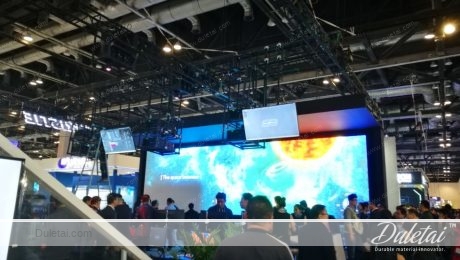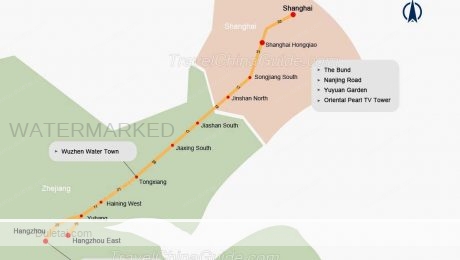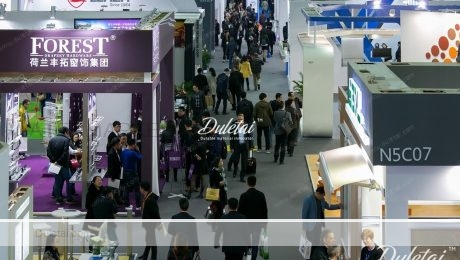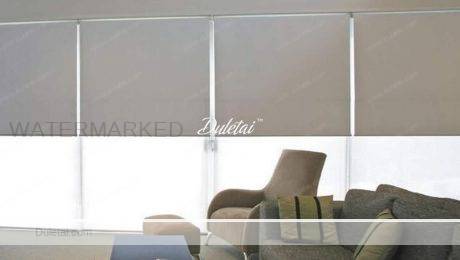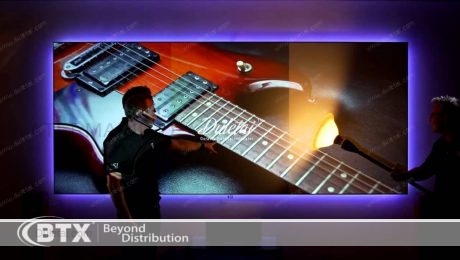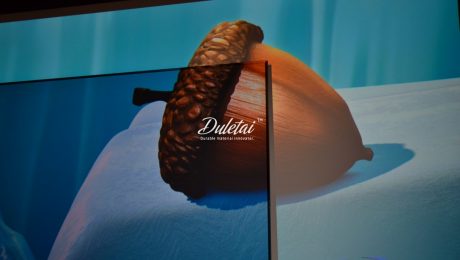Views: 622
INFOCOM is a top ranked conference on networking in the research community. It is a major conference venue for researchers to present and exchange significant and innovative contributions and ideas in the field of networking and closely related areas. IEEE INFOCOM covers both theoretical and projection screen systems research. For INFOCOM 2017, the conference includes a main technical program, a number of workshops, a keynote speech, panels, a student poster session, and demo/poster sessions.
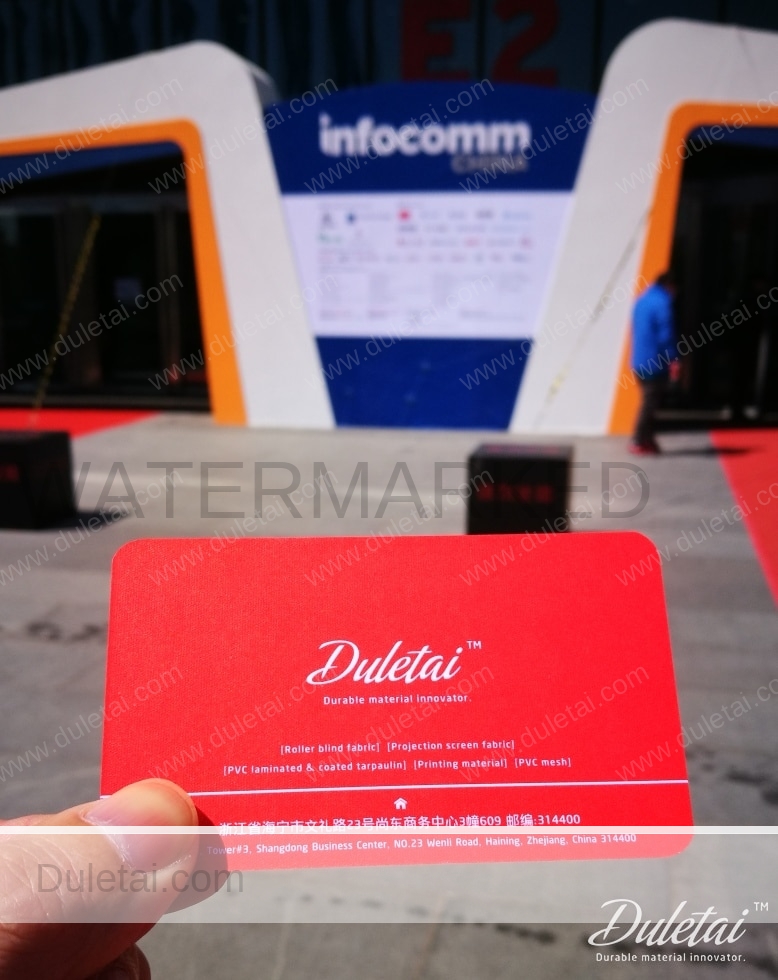

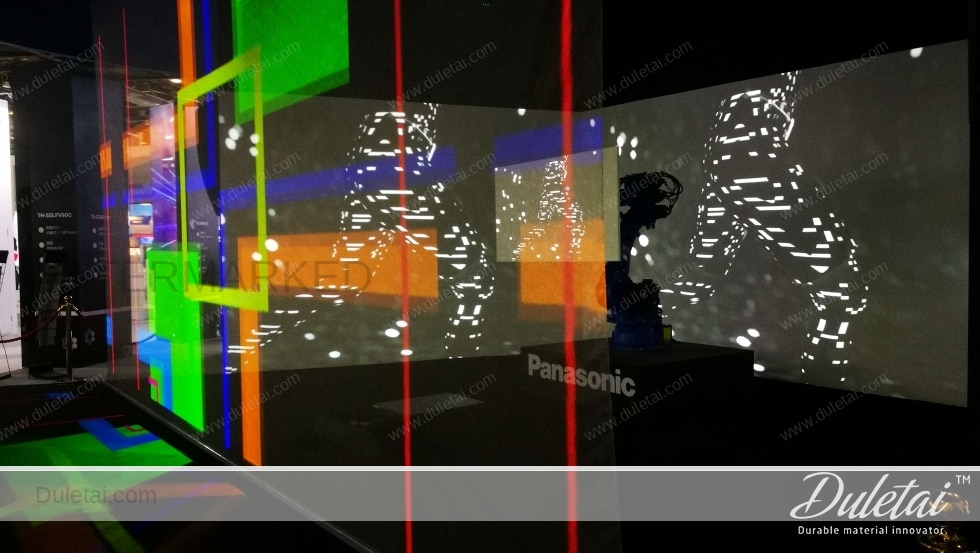
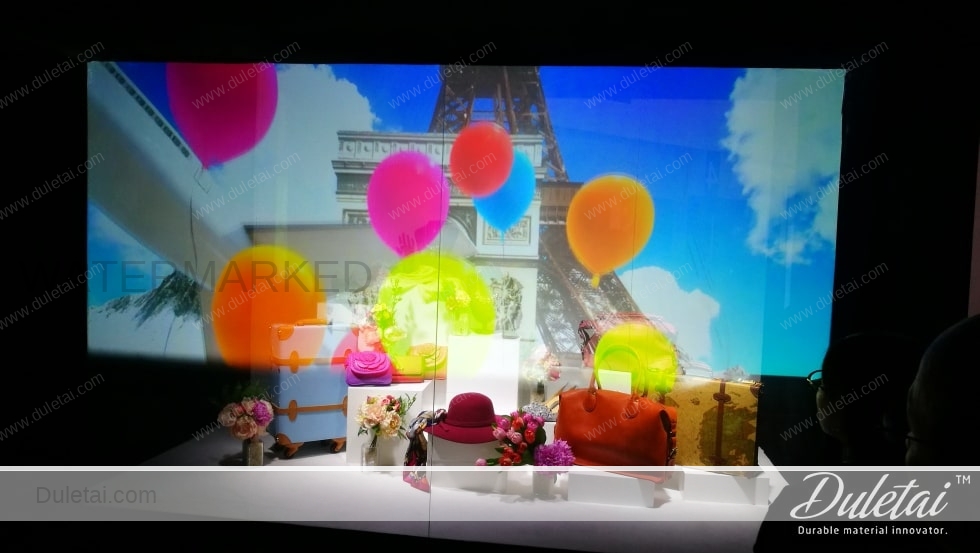
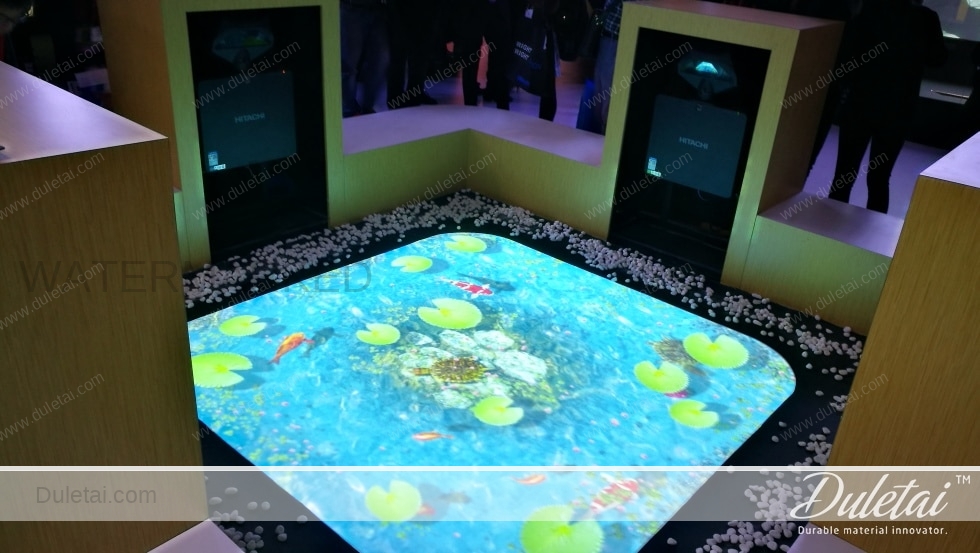
Topics of Submission
IEEE INFOCOM 2015 solicits research papers describing significant and innovative research contributions to the field of computer and data communication networks. We invite submissions on a wide range of research topics, spanning both theoretical and systems research. The topics of interest include, but are not limited to:
- Big data
- Cellular networks
- Cloud computing
- Cognitive radio networks
- Cooperative networking
- Crowdsourcing
- Cyber-physical systems
- Datacenter networking
- Delay tolerant networks
- Energy efficiency
- Fault tolerance, reliability and survivability
- Flow and congestion control
- Information centric networking
- Information security and privacy
- Internet security and privacy
- Localization
- Location-based services
- Medium access control
- MIMO-based networking
- Mobility management and models
- Multicast
- Multimedia networking
- Network calculus
- Network coding
- Network economics and pricing
- Network management
- Network measurement and analysis
- Network science
- Network virtualization
- Optical networks
- Overlay and peer-to-peer networks
- Quality of Service
- Resource allocation and management
- RFID systems
- Router and switch design
- Routing
- Scheduling and buffer management
- Short range wireless technologies
- Smart grid
- Smartphone and mobile applications
- Social computing and networks
- Software defined networking
- Traffic engineering
- Vehicular networks
- Web applications and content distribution
- Wireless access networks
- Wireless mesh and ad hoc networks
- Wireless security and privacy
- Wireless sensor networks
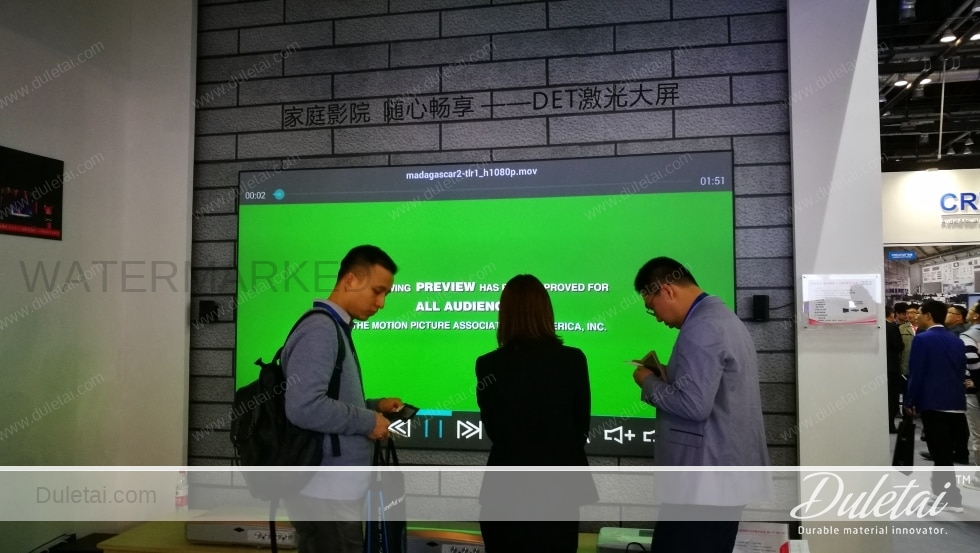
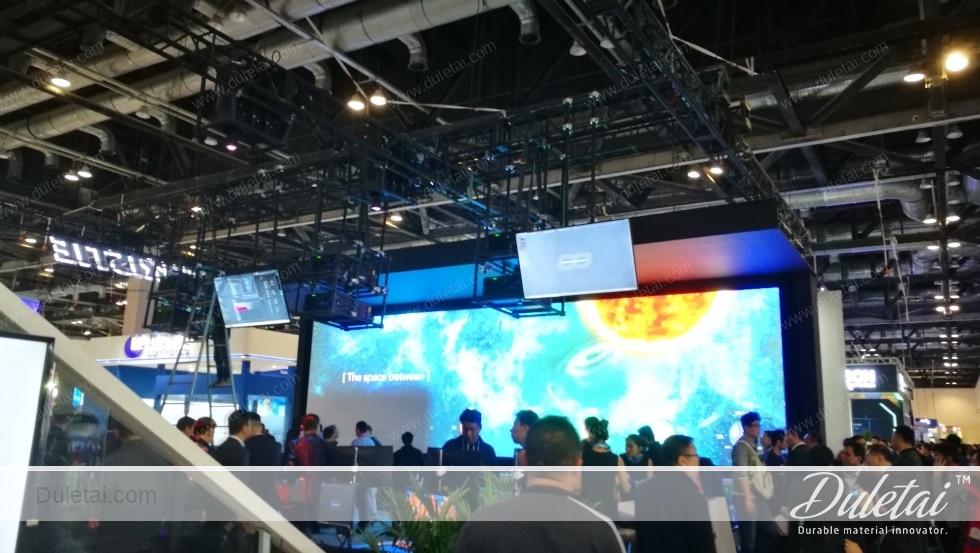
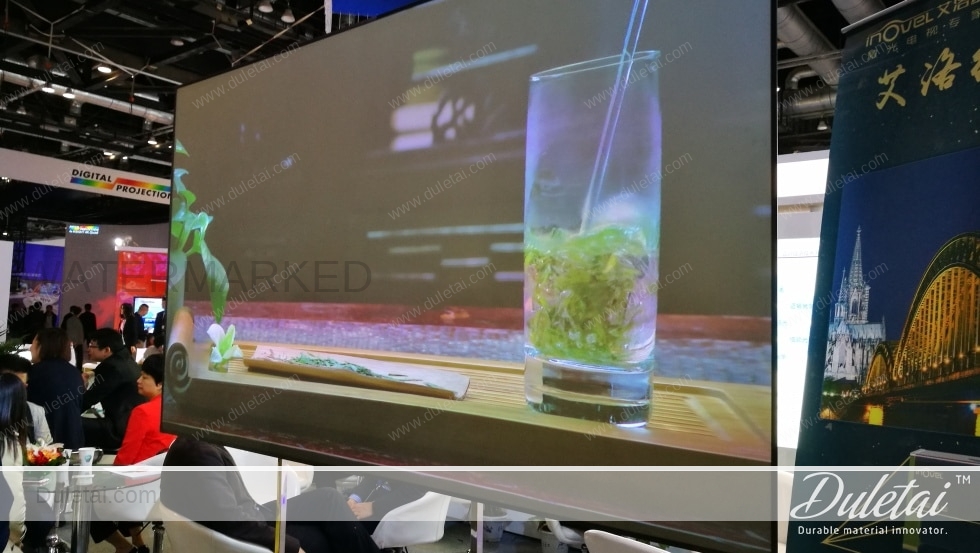
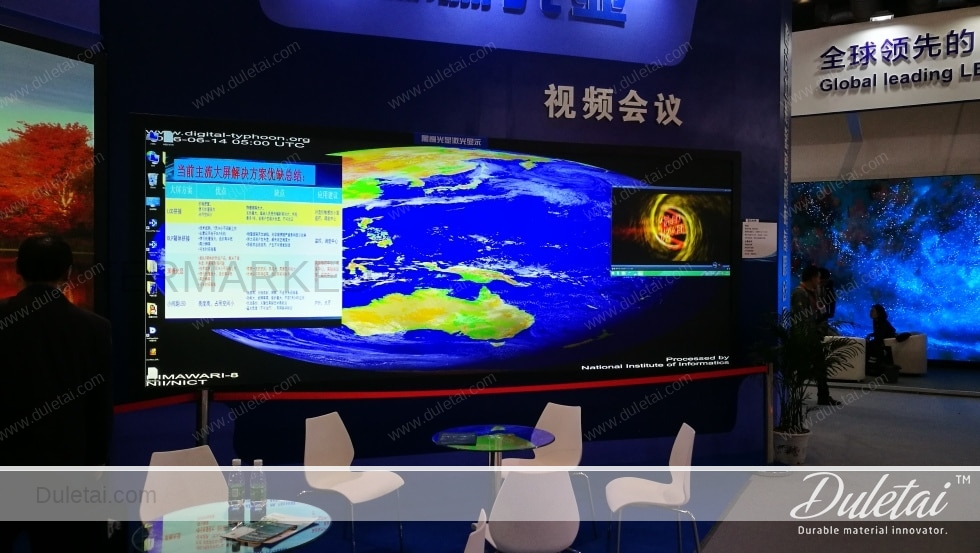
Views: 601
Screen gain could cause a projected photo to appear too intense or too dim. It could enable for hot areas that wash out the picture in certain components of the screen, or a restricted viewing angle that gives a top quality view from only certain seats in the space.
Listed below, we will certainly evaluate the technical meaning of screen gain carefully, check out exactly how it affects the watching experience in various settings, and consider the gain degrees of different screen materials. After that, we will talk about the process of selecting as well as purchasing a display to ideal meet the buyer’s seeing demands as well as places to do so, such as eBay.
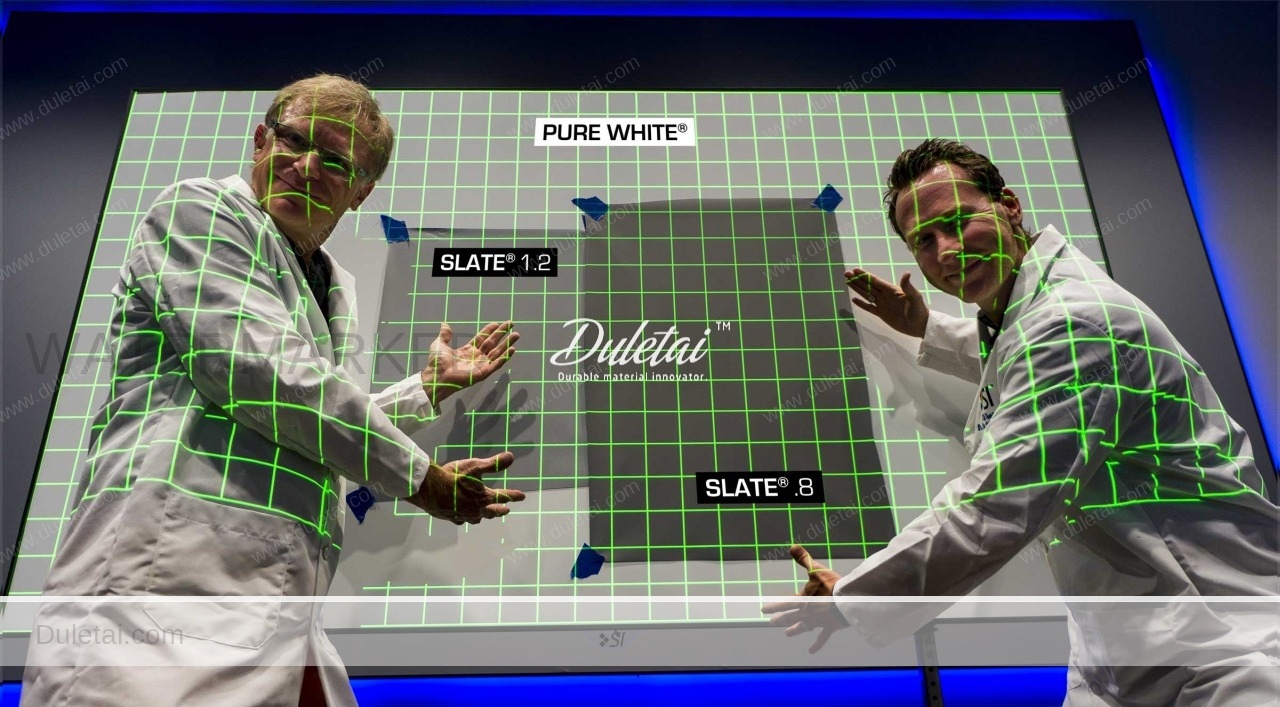
Just what is Display Gain?
Screen gain is the noticeable increase or decrease in photo brightness created by the material utilized for a forecast display. It is gauged as the ratio in between the change in brightness on a specific display as well as the standard, neutral recommendation screen.
The recommendation display is defined as a display that shows pictures at the very same brightness as a board coated with magnesium carbonate, the brilliant white chalk utilized by gymnasts and also rock climbers to dry their hands. This screen has, necessarily, a gain of 1.0 and also is the referral against which all various other displays are compared.
Reduced Gain
A screen which shows pictures less brilliantly compared to the referral display is claimed to have low gain. Its gain will certainly be related to a number much less compared to 1.0, such as 0.6 or 0.8. A display with a gain of 0.6 will be 60 percent as intense as the recommendation display.
High Gain
A screen which reveals images more vibrantly compared to the recommendation screen is claimed to have high gain. Its gain will certainly be understood a number greater compared to 1.0, such as 1.4 or 2.0. A display with a gain of 2.0 will certainly be twice as brilliant as the referral screen.
Is More vibrant Always Better?
Many individuals promptly presume that a brighter, high gain picture will certainly stand for better image top quality. This is not necessarily real for numerous reasons.
How Does Screen Gain Affect Image Top quality?
High gain screens show brighter photos but the photo high quality goes down substantially as you move far from a center-screen sight. That is to state, they have a minimal seeing angle. They could also be vulnerable to locations which are locations that show up brighter compared to the remainder of the screen.
Reduced gain displays show photos with much less illumination, which can be preferable in a room with less ambient lighting. For technical factors, the lower reflectivity additionally enables for a larger watching angle.
These vital distinctions are summarized in the table below.
Issue to Consider |
High Gain Screen |
Low Gain Screen |
|---|---|---|
Hot Spots |
More likely near center of screen. | Not likely. |
Color Shifting |
Shifts in red, green, and blue may distort images since high gain screens do not reflect all colors equally. | Color shifting not likely. |
Viewing Angle |
Narrower angle of quality image. Viewers need to be more directly in front of screen. Fewer seats will see the image as projected. | Wider angle of quality image. Viewers may be seated in a wider arc around the screen. More seats will see the image as projected. |
Ambient Light |
Compensates for higher ambient lighting in settings such as classrooms, trade shows, and conference centers. | Works well in lower ambient light settings, such as home theaters. |
In enhancement to display gain, two added scores are to be taken into consideration in assessing forecast displays:
Height Gain: Describes a display’s gain score at facility front, the brightest position.
Fifty percent Gain Watching Angle: The angle where brightness goes down 50 percent.
Commonly, a low gain display has a greater fifty percent gain watching angle, which indicates that a larger group of individuals will see the exact same view. High gain screens have lower fifty percent gain viewing angles.
All thought about, a lower gain display can be an outstanding option in a house viewing atmosphere. Screens with gain over 1.3 are not typically advised for home cinemas, but become beneficial for profession programs, classrooms, and conference centers.
Residence sports customers will certainly wish to pick displays at the greater end of the home viewing limit. No person wishes to see the Super Bowl at night.
Just how Do Different Display Materials Affect Screen Gain?
Various products influence display gain and also offer different benefits in relationship to different front- or back- estimate systems that may be selected.
Front Projection Screens
Several products are typical for front forecast displays. These come under three broad categories:
Retro-reflective, just like the reflective material utilized in traffic signs.
Angular reflective, causes light to jump off at an angle like a ping-pong sphere.
Illuminative, which show a diffuse light.
The impact of these numerous products on display gain and also various other display properties is kept in mind below.
Along with display gain, two extra ratings are to be taken into consideration in analyzing forecast screens:
Peak Gain: Describes a display’s gain ranking at center front, the brightest placement.
Half Gain Viewing Angle: The angle where brightness goes down HALF.
Generally, a reduced gain screen has a higher half gain watching angle, which suggests that a larger team of people will certainly see the exact same view. High gain displays have reduced half gain checking out angles.
All taken into consideration, a reduced gain display could be a superb choice in a house seeing environment. Displays with gain over 1.3 are not typically recommended for home movie theaters, yet become valuable for trade convention, classrooms, and also meeting centers.
Home sporting activities visitors will naturally desire to choose displays at the higher end of the house seeing limitation. Nobody desires to see the Super Dish in the dark.
Exactly how Do Various Screen Materials Affect Display Gain?
Various materials affect screen gain and also offer various advantages in regard to various front- or back- forecast systems that may be picked.
Front Forecast Screens
Several materials prevail for front projection screens. These fall under 3 broad categories:
Retro-reflective, just like the reflective product made use of in web traffic signs.
Angular reflective, triggers light to jump off at an angle like a ping-pong ball.
Illuminative, which reflect a diffuse light.
The effect of these numerous materials on display gain as well as various other display buildings is noted below.
Description |
Category |
Detail |
Screen Gain |
|---|---|---|---|
Standard White Matte Screen |
Illuminative | When choosing lower-cost motorized screens,, this is your primary option. | 1.0 |
Light Gray Matte Screen |
Illuminative | Some people think this enhances contrast and improves black levels. Others find duller whites problematic. Good with LCD – powered home projectors and often preferable withLCOS projectors.. | 0.7-1.1 |
High Contrast White Screen |
Angular | Good with DLP home projectors.. | 1.1-1.5 |
High Gain without High Contrast |
Angular | Good for rooms with higher ambient light. Base colors include white, gray, and have included pink. | 1.3-2.0 |
Glass-Bead Screen |
Retro- Reflective |
A form of retro-reflective emulsion, these screens have a rougher surface. | 2.5 |
Retro-Reflective Emulsions |
Retro- Reflective |
At the lower end, good for rooms with higher ambient light. At the higher end, extremely bright. Image artifacts become noticeable. | 2.8-9.0 |
The range of screen materials available for front projection is extensive. When deciding which is appropriate, issues to consider in addition to screen gain would include whether the screen is a permanent or motorized installation, if it is to be installed flat or with a curve, and several other factors that can affect both the functional screen gain and the viewing angle.
Rear Projection Screens
Rear projection screens may be simple screens designed to allow the projector’s light to pass through or diffuse. Others are considerably more complex technologically, employing elaborate arrays of miniscule lenses, often in combination with technologies designed to increase contrast or light diffusion. Sometimes more than one kind of lens (Fresnel and lenticular) is employed in a single screen.
Description |
Detail |
Screen Gain |
|---|---|---|
Rigid Plastic Diffusion |
Varying tints and optical characteristics are added to meet the requirements of the space where the screen will be installed. | 1.0-2.3 |
Flexible Plastic Diffusion |
These flexible screens are offered in varying tints and optical characteristics to meet the requirements of the space where the screen will be installed. | 1.0-1.8 |
Fresnel Lens with Diffusion |
Low gain, wide angle. | Varies based on diffusion coating |
Fresnel Lens with Lenticular |
Fresnel lens screens with lenticular elements are high gain. | 3.0-3.5 |
Fresnel Lens with Lenticular and High Contrast Layer |
Fresnel lens screens with lenticular elements and a high contrast layer are considered medium gain, high contrast. | 4.0 |
A wide variety of display types are offered for those who use back forecast systems, using a variety of gain levels ideal to various area setups.
Is Display Gain Different for Back Estimate?
The definition of display gain is essentially the same whether front or rear estimate is being considered. The technologies for generating the screens are different, however display gain still refers to the difference between the referral board and the light at the facility front of the screen.
Maintain Projector in Mind When Choosing a Display
Screen gain is just one factor in the regarded brightness of a viewed image. Projector illumination will likewise affect image brightness. So for a low-light home setting, a really brilliant projector could need a specifically low-gain display in settlement. A projector with a reduced light might need a higher-gain display. Conversely, if the projector to be utilized in a classroom setting did not have a brilliant light, then a teacher could want an especially high-gain display.
Exactly how to Buy Projection Screens
Locating the best projection screen is primarily an issue of deciding just what you are trying to find. Depending on the illumination and configuration of your room, you could want a display with a particularly broad viewing angle, that is to state reduced gain. Suppliers normally price displays not only for display gain, however additionally the watching angle and also the half gain viewing angle, which is the angle at which brightness is decreased by fifty percent. This is beneficial in determining in an extra functional sense just how large a viewing angle a particular screen actually provides.
Depending upon your very own level of confidence in intending a residence theater task, you might wish to speak with a professional making certain you have actually covered all the bases. Front- as well as rear-projection screens could be bought from specialty businesses that intend and install residence movie theaters, from big electronics shops, from discount stores, as well as from various on-line electrical outlets, consisting of eBay.
The best ways to Store for Forecast Screens on eBay.
Finding the appropriate forecast screen on ebay.com is mostly an issue of determining just what you are trying to find. There are constantly an excellent many outstanding screens readily available, so you might intend to do some surfing simply to arrange with your concerns.
When you’re looking for projection displays on eBay, you could begin by picking estimate screens,, which are found within the TV, Video & Residence Audio as well as Service & Industrial areas, to obtain a sense of the options. The choice is really substantial, so if you have actually currently identified producers you favor, you could restrict your selections by manufacturers.
Compare Costs
You will certainly wish to figure the expense of shipping right into the last price of your display, and also eBay offers a rate sorting option that allows you to do that. Sorting by cost additionally aids you to compare costs between sellers. Dramatically different rates in some cases represent bargains however sometimes stand for items that are not exactly what they seem to be.
Have a look at the Sellers
You may prefer to make your initial selection just from suppliers who take returns. Still, return plans vary and also each supplier define their return plan details on their product pages.
It is also important to feel comfy that you are taking care of a reliable vendor. On ebay.com, two means to confirm that a vendor is reliable is to examine the responses left by prior consumers and also to opt to buy from leading ranked vendors. These are vendors that have actually shown, over lots of purchases, that they give the leading levels of dependability as well as customer support.
Conclusion
The appropriate general photo brightness for a particular house or service viewing setting will certainly be determined as a whole by the illumination of the viewing atmosphere and the demand for pictures to be noticeable throughout a broad or slim checking out angle.
Screen gain, in addition to projector brightness, will certainly together identify just how intense the projected picture appears. Figures that aid the customer understand how vast a seeing angle gets a regular image and also at which angle the picture loses half its illumination (fifty percent gain watching angle) assist in knowing exactly how wide an area could efficiently appreciate the watching experience.
To purchase a residence or organisation projection screen that will show well on you, it is essential to take screen gain into consideration. This will certainly permit you to pick the display that provides you and your visitors the most comfortable and also appealing viewing experience.
Views: 564
Blackout cloth is our top-selling Projector Screen Material making it a budget-friendly, do-it-yourself screen building favorite! This front projection blackout fabricsurface is the standard to which all other screen surfaces are compared.
Blackout Cloth is our top-selling Projector Screen Material helping make it a budget-friendly, do-it-yourself screen building favorite! This front projection blackout fabric surface is the standard to which all other screen surfaces are compared. Blackout Cloth’s matte white surface and gain of 1.0 diffuse light in all directions so the image can be seen from any angle. Blackout Cloth material is 70% polyester, 30% cotton blend fabric that is coated with multiple layers of thin rubber and is 110″ wide. It is suitable for use in a variety of settings with accurate color and clarity in a dark viewing environment where ambient light is controlled. Blackout Cloth screen material is extremely sturdy and is best for a wooden fixed frame where it will be stretched tightly and evenly in all four directions. It also works for our tension-mounted Finished Edge Screens, Hanging & Standing Kits. You should project onto the smooth side of Blackout Cloth projector screen material. Why buy Blackout Cloth? Buy Blackout Cloth for a perfect entry-level, budget-friendly DIY projector screen!
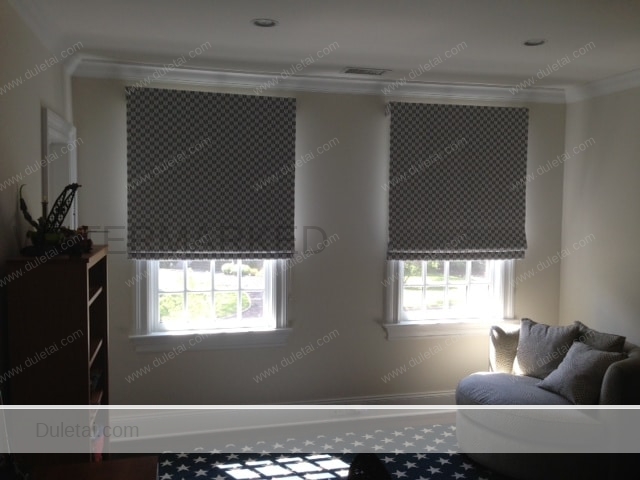
Key Material Deciding Factors
Perfect for an entry-level, budget-friendly DIY projector screen making it our top seller
The front projection standard to which all other screen surfaces are compared
Matte white with a gain of 1.0 so the image can be seen from any angle
Provides accurate color and clarity in a dark environment where ambient light is controlled
Tension-Mount/Stretch Blackout Cloth for best results
Best for an indoor, fixed frame application
70% polyester, 30% cotton with rubber coating
The smooth texture side with a rubber coating faces the audience
Ships Free! * Ships folded in a box (Weight/Dimensions).
Blackout clothships folded by default, however, select sizes have a packaging option to ship rolled on a tube for an additional fee. In the DIY market there is a wide range of comfort levels, skill sets and abilities. If you are at all concerned about folds you may want to consider ordering your material rolled, if available. Please note screens where the shortest dimension exceeds 116″ would require freight shipping, which is not available online. See our Freight Shipping Information, in the FAQ, for more information on obtaining a freight quote. * Handling Time & Delivery.
Views: 640
Outdoor projection screens can offer a lot of fun in nice weather. A projector can provide a large area for screening a film, and it can be fully customized. Projectors can be dressed up with curtains or other adornments or simply left in a minimalist style. However, it can be a daunting task to figure out how to start and to determine what is needed for construction. Getting good material for the screen is a crucial task. If the quality of the material is not up to the standards of the projector, it can degrade the picture quality. The material used may vary based on the builder’s budget, the size of screen desired, and the quality of the projector. The materials for an outdoor projection screen project can be found at big-box home improvement stores, electronics stores, and garage sales. They can be purchased in a kit or accumulated separately as one-off materials. These items and plenty of help from vendors can be found on as well. Building an outdoor projection screen can be a complicated process but, once it is built, it can provide years of backyard movie fun.
Building a Frame
The first step is to figure out the project budget and the size of the screen. As a general rule of thumb, the larger the screen, the more expensive it is. The quality of material is also a factor in budget. The projector and the picture quality it displays are big factors as well. If the projector sends out a high-definition picture, but the material used in the screen is not capable of accurately replicating a high-definition image, a potentially expensive projector can be put to waste. Once the builder has an idea in mind of what he or she can build and the size, the frame itself can take shape. Plans and ideas for frame building can quickly be found on the Internet.
Frame Materials
The frame itself can be constructed out of many different materials. These can be mixed and matched based on budget and ease of use. If the builder wants a more permanent setup, heavier frame materials, such as wood and thick metal piping, can be used to withstand the elements. Connectors can be put into place with nuts and bolts for a more secure setup as well. Of course, this is not ideal if the builder desires a temporary projector. If the builder wants to break down the setup between every use, thinner metal pipes or PVC pipes can be utilized for the frame. Lynch pins can be used to connect the corners for easy removal. Keep in mind that these temporary setups are not meant to withstand inclement weather. A strong wind can knock them over and destroy on what the builder has spent time and money.
Black Felt Edging
Black felt, while not technically part of the screen material itself, is an integral part of the outdoor screen setup. Pictures from a projector do not have clean edges as the light at the edge of the screen bleeds. If the material around the edge of the frame is light reflective, it is distracting to the eye. Black felt tape absorbs all of the light and gives the screen clean edges. This fabric can be bought in adhesive rolls, which can be placed with a steady hand and a laser level conveniently.
The Outdoor Screen
The screen itself can be made of many materials, and one of first things to consider is whether the projector used is meant to be front projecting or rear projecting. With front projection, the projector sits in front of the screen and throws out light onto a screen. With rear projection, the camera sits behind the screen. In this case, the screen must be designed to be transparent to allow light to pass through. Most temporary setups are front projection while more permanent setups may be rear projection to allow for the ability to protect the projector and any miscellaneous electronics that go along with the setup.
Material 1: Projector Screen Paint
There are many different materials that can be used for a front projection setup. One of the easiest ways is to use projector screen paint. This resembles paint that would be used to paint the walls of a house, but allows for high-contrast displays to be projected onto it. The downside of the paint is that it can be difficult for the builder to locate a space that is large and flat enough for the screen that is desired. Also, imperfections in an outdoor wall show up in the picture as well, which can be frustrating. However, for ease of use and installation, paint is a terrific option. Weather can deteriorate this paint, and reapplication may be necessary from time to time.
Material 2: Inflatable Setups
These setups can be both front and rear projection, and come in a variety of shapes and sizes. These can be found in some of the largest sizes available, and would be suited for large gatherings, such as a town picnic or a large backyard film screening. The ease of setup is also evident, as all that is needed is a pump for inflating the device and a hammer to knock stabilizing stakes into the ground. They are portable as well, allowing for easy use. If the builder is looking for an easy setup that does not require much labor besides operating an air pump or is looking to be able to move about with the theater setup easily, the inflatable screen is a great way to go.
Material 3: Blackout Cloth
In order to get the flattest, most durable, and most picture-stable screen, cloth-like materials should be used. Blackout cloth is one of the most popular options for theater screens. The material itself resembles movie theater cloth and can be cut to customizable lengths.
Material 4: Outdoor Fabrics and Tyvek
A cheaper option is outdoor fabric, which can be very durable in a more permanent setup. Usually made from Cordura, outdoor fabric can be found in the off-white coloring desired for a theater projection. Tyvek, manufactured by DuPont, is another option for outdoor fabric. While not necessarily cheaper than blackout cloth, Tyvek is a more durable product than both blackout cloth and most outdoor fabrics in an outdoor setting. The manufacturer touts it as strong, lightweight, flexible, and water-resistant, making it ideal for a more permanent outdoor setup.
Material 5: Billboard Tarps and Tarpaulins
For a project with a lower budget, vinyl billboard tarps can be used. These are usually repurposed, rather than brand new, and can be used to provide a very large white area. Although shiny vinyl is not the best material for an outdoor screen, it can be a great option for very large projection setups. Smaller tarpaulins that are usually reserved for home improvement projects can also be used, although these should only be thought of as a very cheap alternative solution. While a white or off-white tarpaulin can be found, the thick fibers and uneven surface do not make for good picture quality. If the builder has a high-end projector that puts out a high-definition quality picture, billboard tarps, and tarpaulins are not good options. A builder on a budget with a lower-end projector can find these materials sufficient for his or her needs, however.
Rear Projection Screens
The material for rear projection screens can be a little trickier. The projector sits behind the screen and projects a picture onto the back of the screen, which means that the screen must be semi-transparent. The main advantage to this is that there is not a large projector setup that takes up space in front of the screen, so there is better seating for guests. Movie watchers can spread out and view the film from all angles. The downside to rear projection is that the picture quality may not be as high as some of the front projection setups. The other major downside is that there can not be lights or even any light pollution from behind the screen, or the projection has a washed out quality to it.
Material 6: Spandex
One of the more interesting materials that can be used for rear projection is spandex. This can be stretched out and used as a great portable setup. The frames for this material usually have to be a bit stronger as the spandex needs to be stretched. Some spandex units come with frames designed to hold the taut piece of fabric.
Material 7: Trapeze
For those with a higher budget for making a rear projection screen, there is a material specifically designed for rear projection setups. The material is called Trapeze, and it is manufactured by Dazian. This is high quality, but is expensive compared to other materials listed. However, it is one of the more highly recommended fabrics for rear projection setups and provides excellent picture quality. It can be difficult to find the material, but it is well worth the search since the result is a high-end projector.
The following is a table with the materials for front projection outdoor screens, the pros and cons of each, and the link to each.
Material |
Pros |
Cons |
|---|---|---|
| Paint | Ease of installation; screen size can be whatever the builder desires | Can erode outdoors; can be difficult to find a good surface for projection |
| Inflatable | Portability, many size options; ease of setup | Cost |
| Blackout Cloth | High Quality; best picture quality | Cost; can mean cutting to size during setup |
| Outdoor Fabric and Tyvek | Durability | Not as good of picture quality as the blackout cloth; Tyvek can be expensive, especially if custom cut |
| Billboard Tarps and Tarpaulins | Durability; size; cost | Picture quality is not as good as cloth screen, even worse on home improvement tarps |
| Spandex | Cost; custom sizing | Can be rough on a frame when stretched taut |
| Trapeze | Best picture quality for rear projectors | Cost, especially for custom sizing; difficult to find |
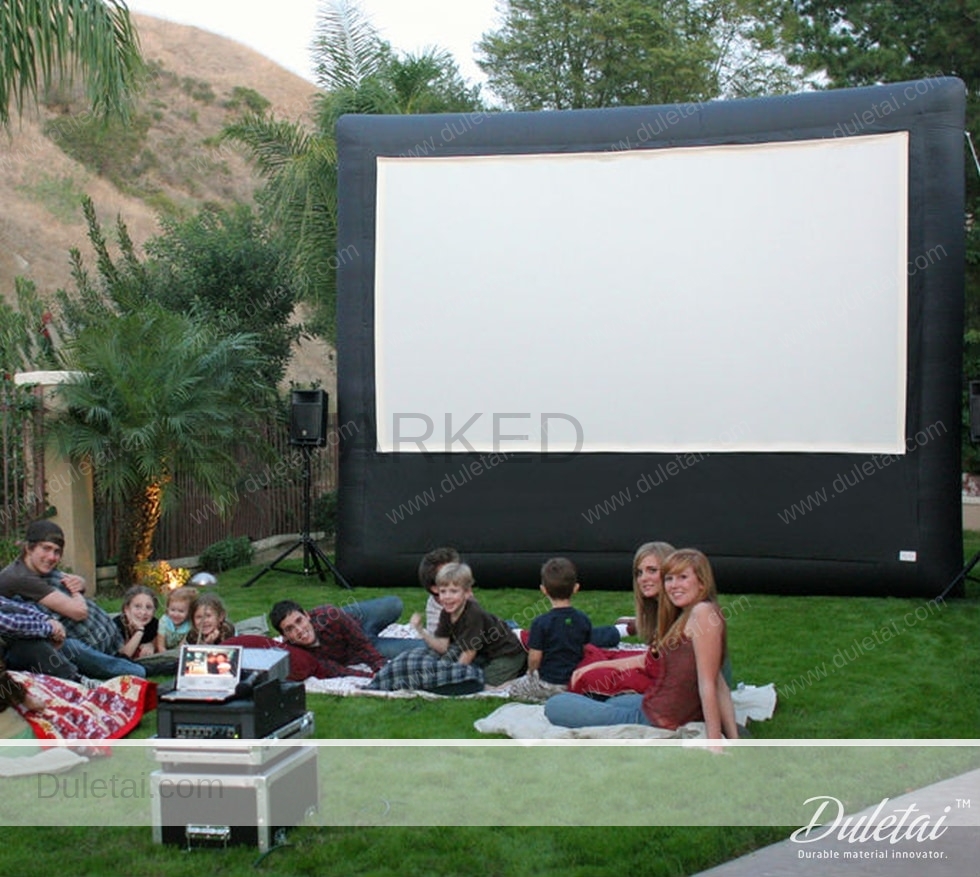
Buying outdoor projection screens
is a fantastic place to secure all of the materials needed to construct an outdoor projection screen. One of the easiest ways to find anything you might be looking for is the search bar on any page. There is also a Projector Screens and Material category that can be of use when you are starting a search and looking for ideas.
Sellers and Ratings
In addition to a wide variety of materials, manufacturers, and options, has a lot of vendors selling these various items. The ability to find an answer to any question you may have is aggregated at . Just find an item you wish to inquire about, and any of the vendors that sell the item should be willing to answer any questions you may have. In addition, you can see information about each seller in the seller ratings and reviews. After your transaction, post a review of the seller to help other buyers.
Conclusion
Outdoor screens can be used for a variety of purposes. Whether it is for a movie night with the family under the stars or a backyard barbecue with friends while the big game is on, a good screen setup can really enhance the event. Once a good frame is built, a screen can be determined. The two large factors in determining how a screen is built are the project budget and the type of projector the user plans to use. There are many different materials for front and rear projection setups, and each has its pros and cons. One of the best places to buy all of the materials needed for an outdoor projection setup is . The user is able to find multiple examples of all the materials listed, and provides the buyer with a wide selection sold by many different helpful vendors.
Views: 798
The city of Haining is situated in the northeastern part of Zhejiang Province, on the southern tip of the Yangtze River Delta. It is located 125 kilometers west of Shanghai, and some 60 kilometers east of the city of Hangzhou. To the south of Haining lies the famed Qiantang River.
Haining attracts the attention of travelers, owing, in particular, to the spectacular annual tides that rush up the Qiantang River. Each year, thousands of tourists from around the world flock to Haining to watch the famous tide bore. Tidal bores occur about 120 days a year in Haining. The International Qiantang River Tidal Bore Watching Festival is held each year in response to the increasing popularity of this recurring event. The festival takes place on the 18th day of the eighth lunar month.
Other sights in Haining worthy of a visit include Haining Culture Street, where you can see ancient buildings dating from the Ming (Ce 1368-1644) and Qing (CE 1644-1911) Dynasties; and the Ming Dynasty period home, the Chen Family Residence.
Weather
Haining belongs to the monsoon area of subtropical zone, and has favorable natural conditions. It enjoys four distinctive seasons, affluent rainfall and sunshine, and a mild weather. The annual average temperature is 15.9 °C, and precipitation is 1187 mm.
Haining receives 60 percent of its annual rainfall from May to September. During this time, the rainfall is frequent and the air is damp and muggy. Spring (March – May) and autumn (September – November) are the most suitable time to visit, when the weather is the most pleasant.
Transportation
Train
Haining is located on the Shanghai – Hangzhou railway line. Haining Railway Station is located in the middle of the city, close to the Leather City. There are frequent trains that operate between Haining – Hangzhou and Haining – Shanghai. There are a few D trains (D trains are Bullet Trains, the average speed of which can reach 200km/h) from Shanghai to Haining. The journey takes only 1 hour by D train. Even on a slow train, the travel takes no more than 2.5 hours. Travel from Hangzhou to Haining on a D train takes only half an hour, while on a slow train, it takes a full hour. In addition, there are direct trains to Haining from Nanjing, Guangzhou and Ningbo.
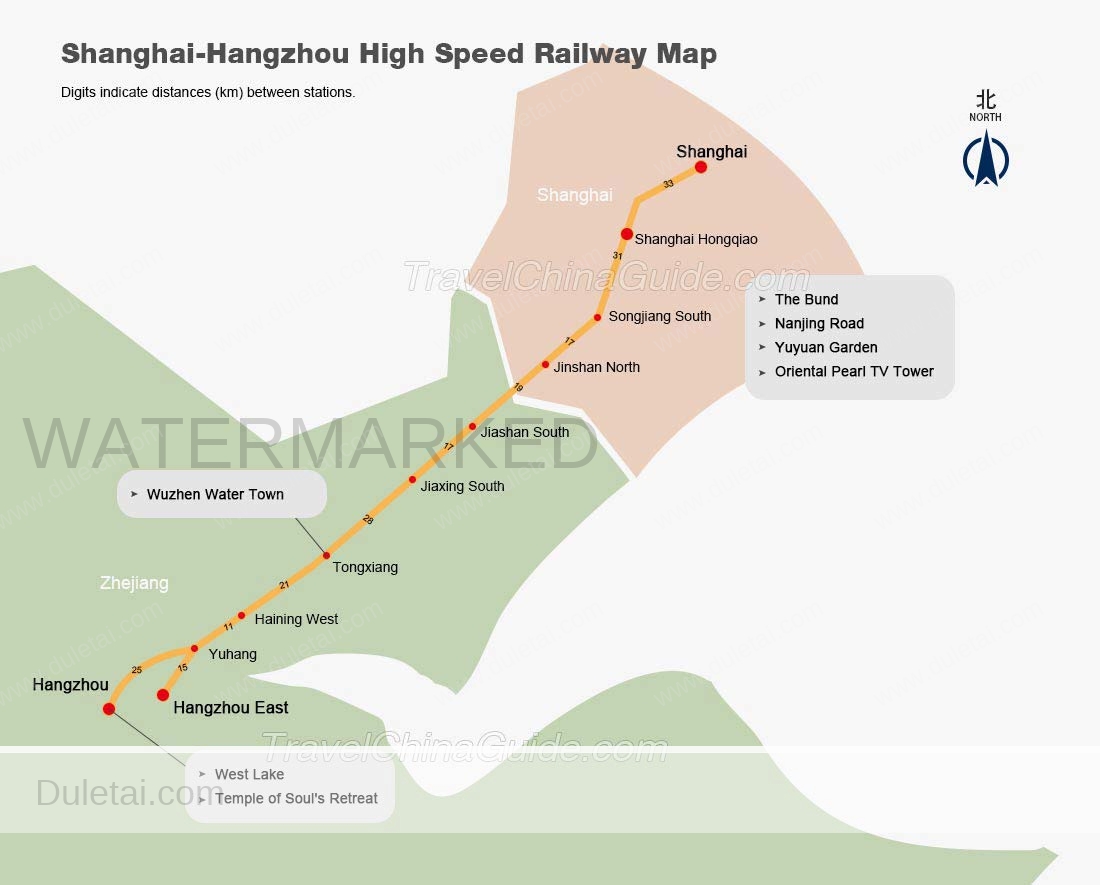
Bus
There are buses from both Shanghai and Hangzhou to Haining. The trip from either city to Haining takes about an hour.
There are daily departures from Shanghai Long Distance Bus Station, which is adjacent to Shanghai Train Station, and from Shanghai South Bus Station. Buses from Hangzhou to Haining depart from Hangzhou North Bus Station frequently.
There are three bus stations in Haining: Haining Bus Station, Haining South Bus Station, and Haining North Bus Station. The main bus station is Haining Bus Station, located in Xiashi Town in the center of the city. Buses to Hangzhou and Shanghai depart from this station. Buses from Haining to Yanguan leave from Haining South Bus Station.
Views: 528
R+T Asia 2017 is the leading trade show for the Asia Pacific market, producing successful annual trade shows in Shanghai. This three-day business-to-business event will be held on March 21-23, 2017 and organized by VNU Exhibitions Asia and Messe Stuttgart. The international character of R+T Asia exhibition offers a perfect interactive platform for meeting all your key partners, potential customers, manufacturers, buyers, associations and media related to the sector of doors, gates, roller shutters, window covering, external sun shading systems and internal sun protection solutions.
External Sun Protection Systems (Roller Shutters, Window Shutters, External Venetian Blinds), Internal Sun protection Systems (Roller Blinds, Rainbow Blinds, Shangri La Blinds, Honeycomb Blinds, Vertical Blinds), Window Fabrics, Shading Systems (Awnings, Tarpaulins, Sunshades, Umbrellas, Pergolas, Tents), Venetian Blinds, Technical Textiles, Drive & Control Systems, Accessories & Fittings, Machinery, Interior Sun and Sight Protection, Automatic Doors, Industrial Doors, Entry Doors, Garage Doors, Drive & control devices, Accessories and fittings for door and gates, Machinery for doors and gates.
At the SNIEC Exhibition Center, the most modern in China, Messe Stuttgart, in cooperation with VNU Exhibitions Asia, organizes the R+T Asia, the trade fair for roller shutters, sun protection, roll and garage doors. The focus of the event is the demand from the markets of Asia/Pacific, as well as the import of foreign and export of Chinese quality products. The visitors will find a variety of new technologies and innovative products. The R+T Asia is considered the only exhibition of its kind in Asia.
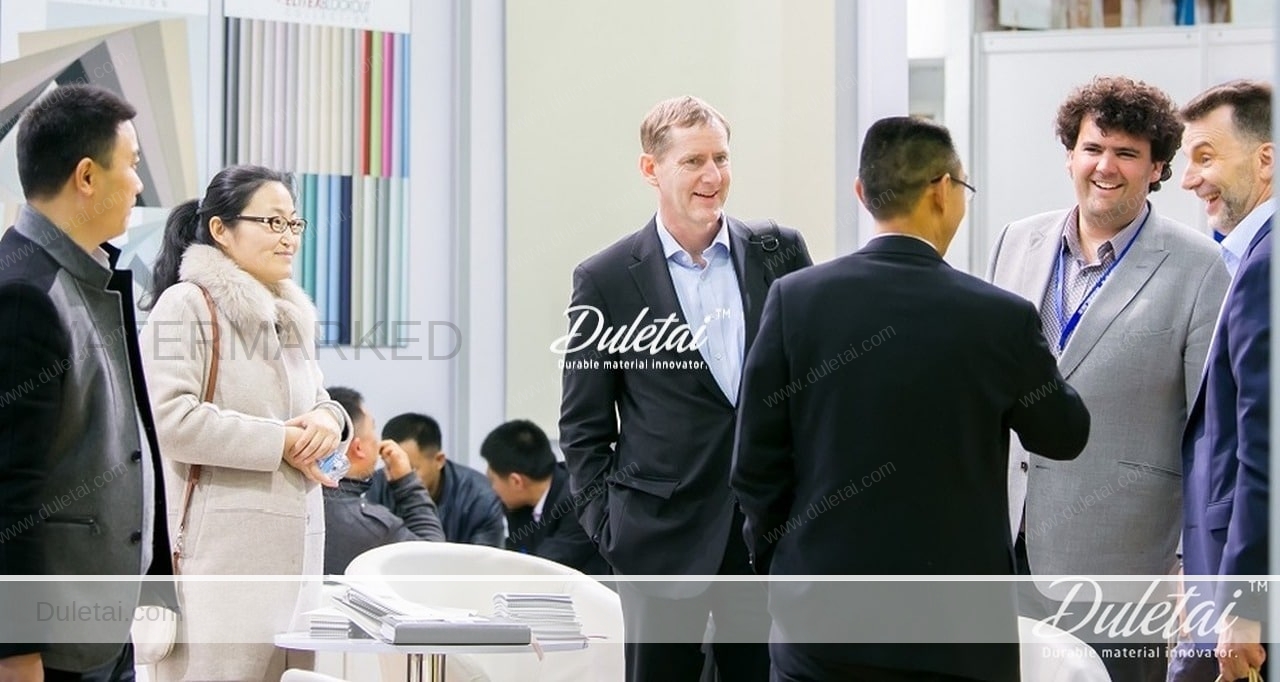
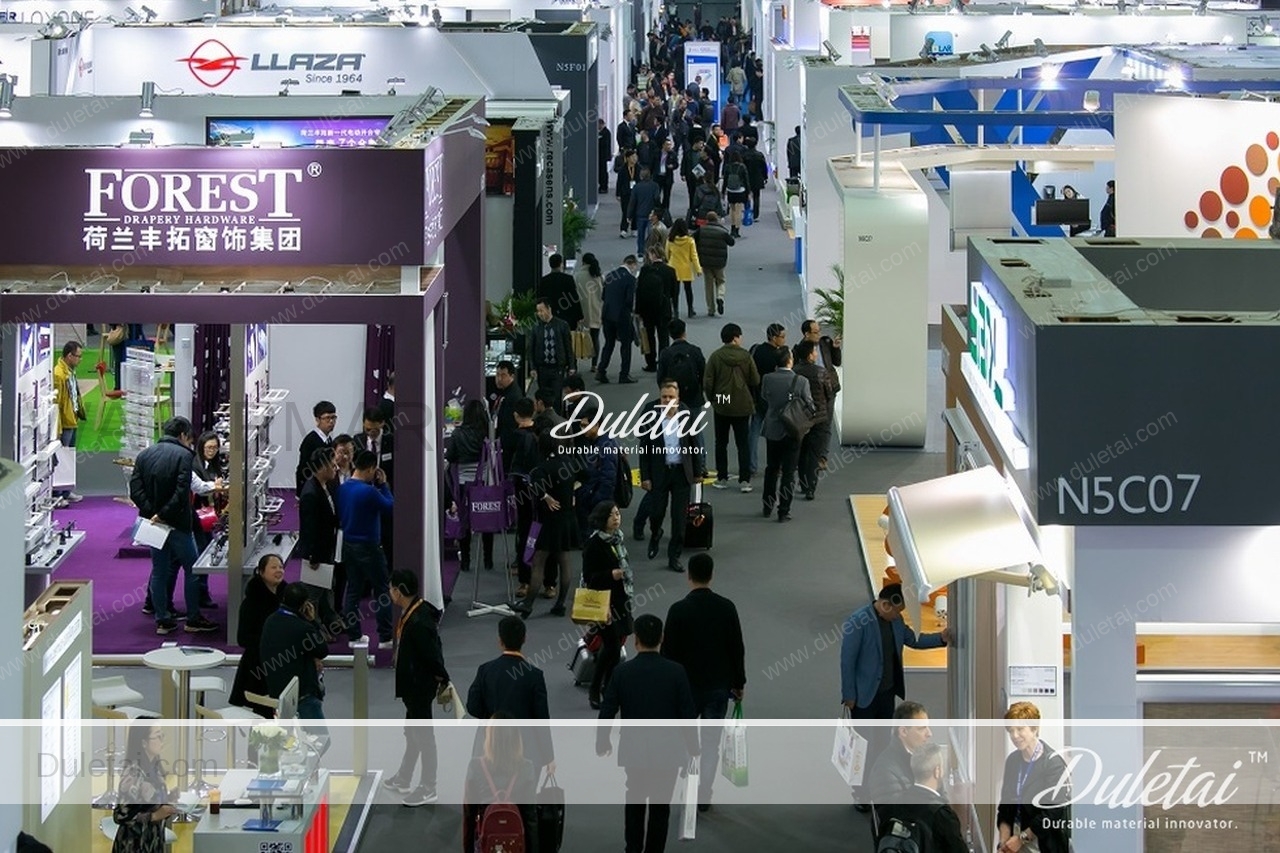
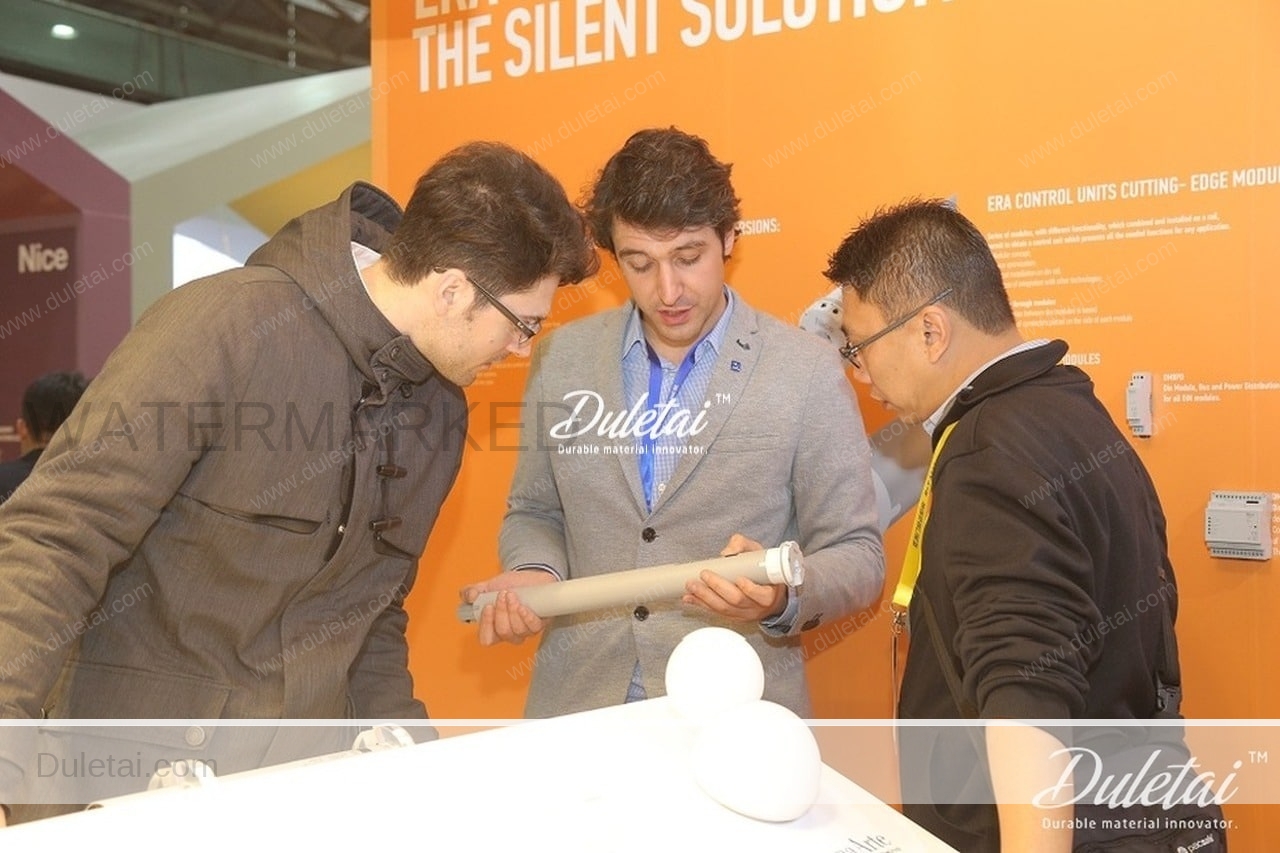
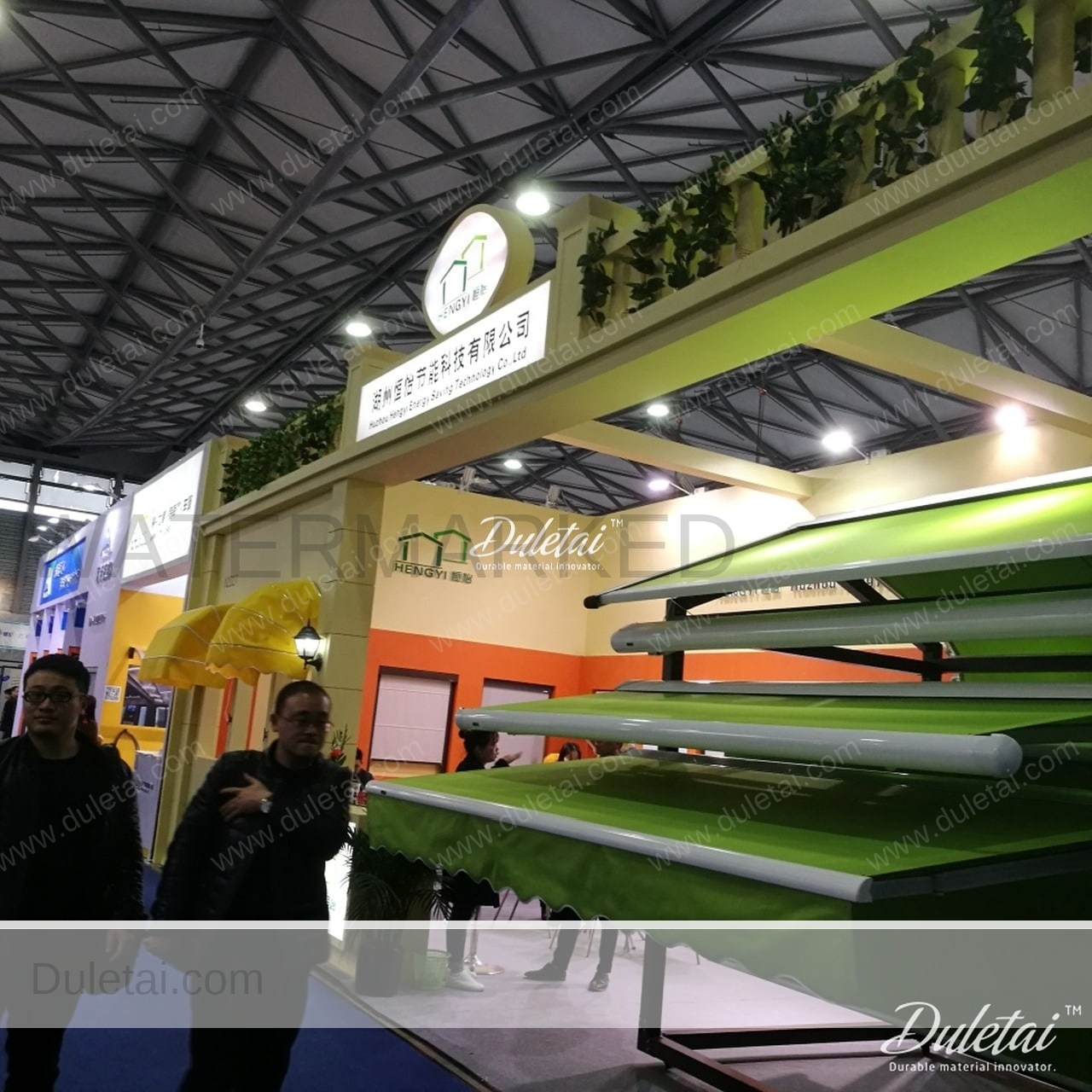
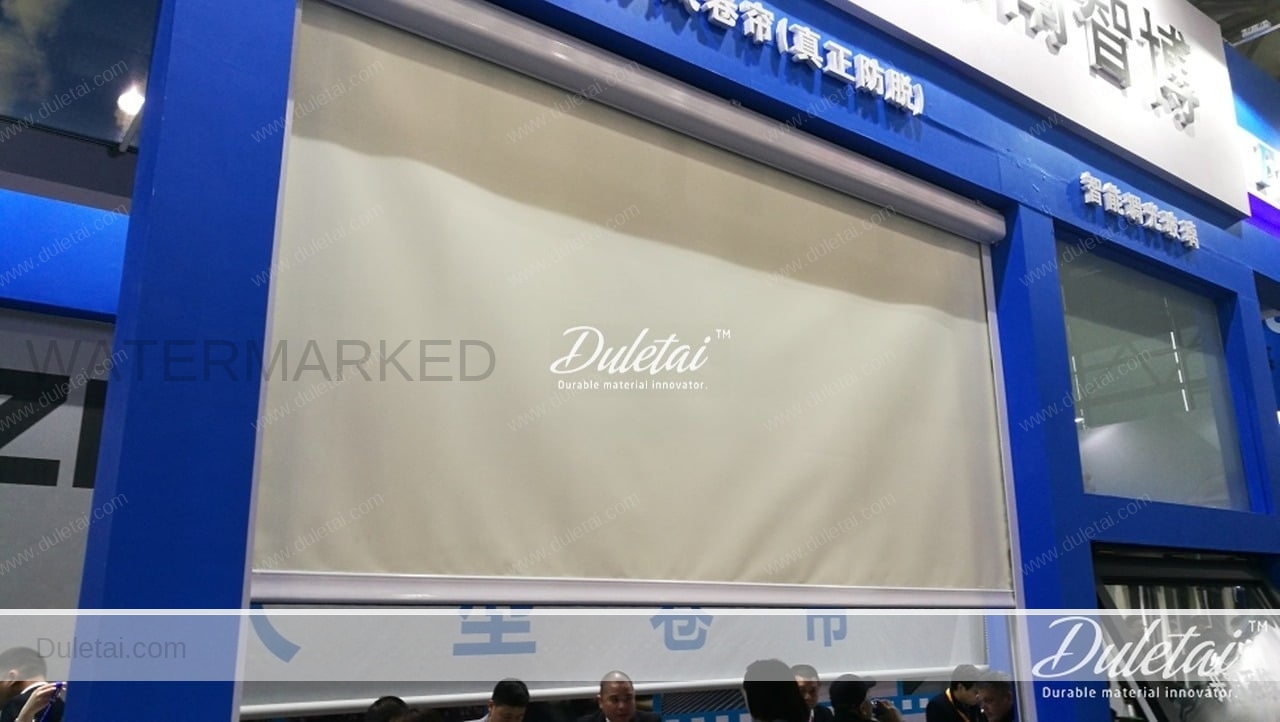
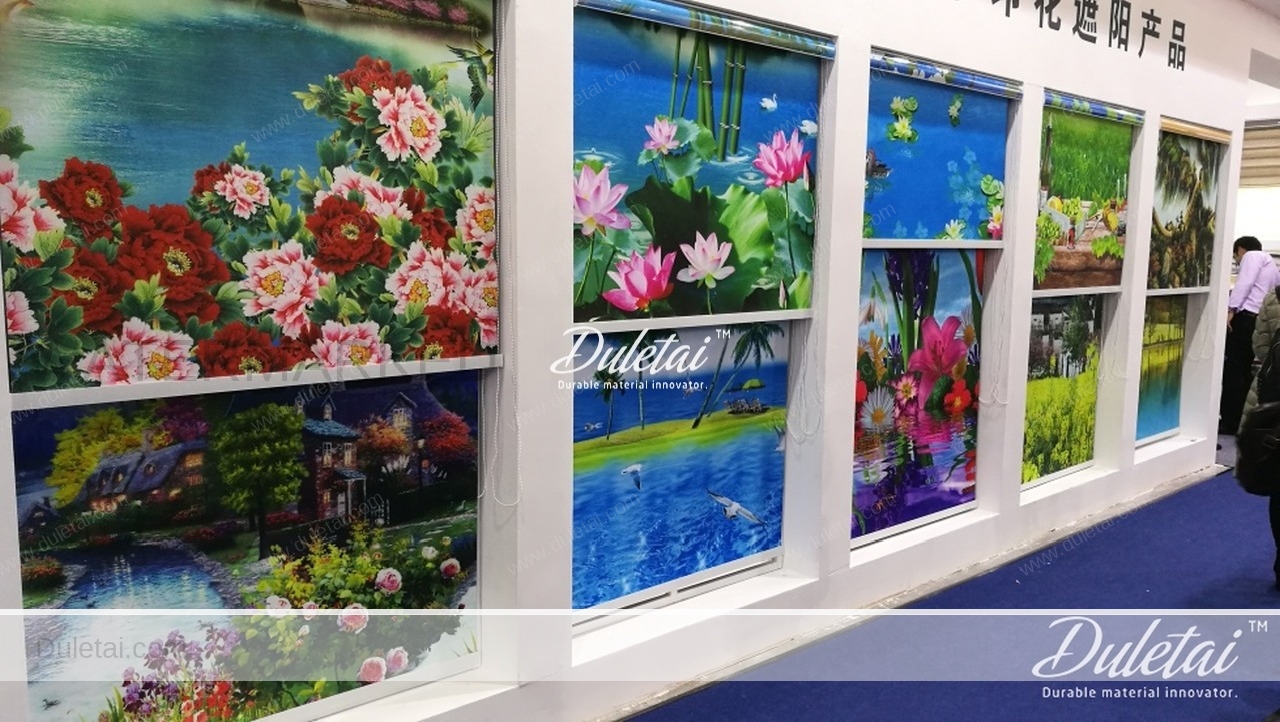
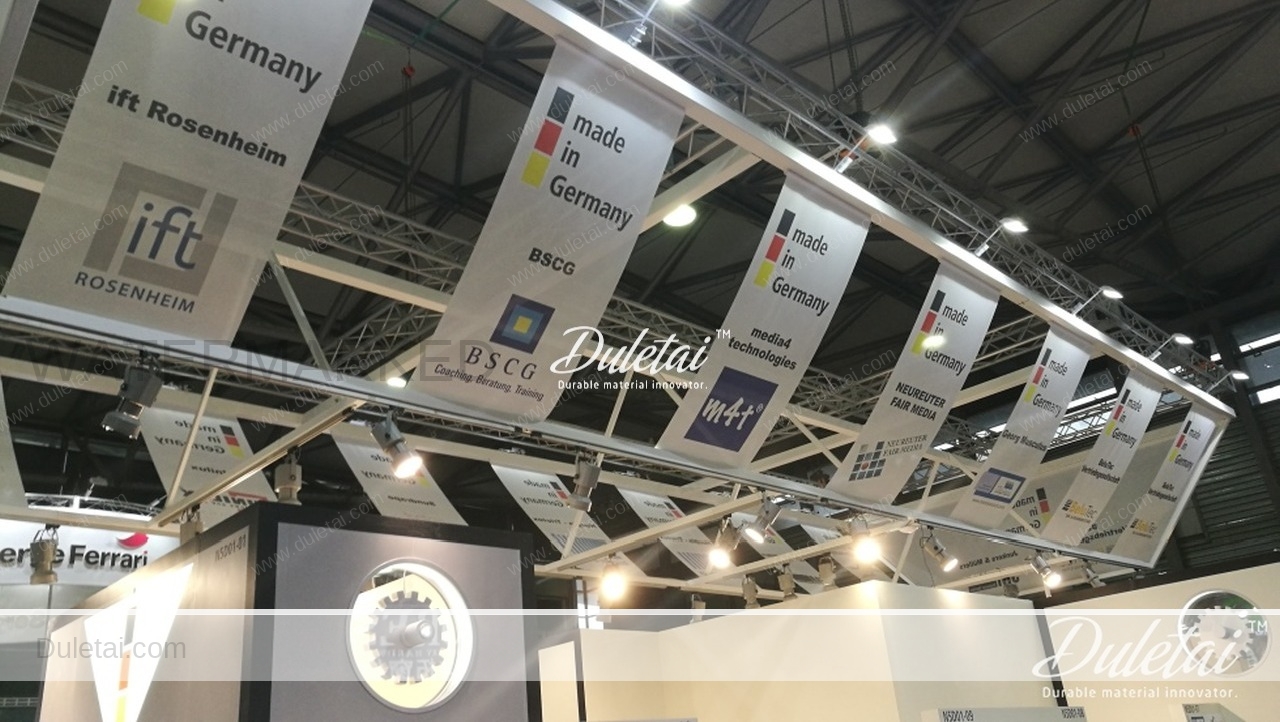
The purchasing volume for China’s window market has reached 4 billion RMB with 20% for Jiangsu, Zhejiang and Shanghai. East China is developing as an important hub for the window industry.
Energy saving, safety and comfort play a big role for windows and for integrated sun-shading solutions for civil buildings. The latest technologies of the global window industry will attract owners, architects and contractors.
The window industry is continuously developing and researching new technologies. Many window and door systems agents are also manufacturers. Some aluminum providers began producing their own window and door systems with standardized sizes, seeking to match the quality of Europe’s energy-saving doors and windows.
Income per person and living standards in China are increasing as are government standards for energy-saving buildings. China has 28 billion sqm of buildings, and many of them, with their doors and windows, are being renovated. Plus, China’s urbanization rate is higher than 50%, and the annual growth of the new construction market exceeds 20%.
In China 55% of doors and windows are made from aluminum, 35% are made from PVC, and 15% are made from steel or wood. The market for plastic windows in North China is significant. Copper and metal windows, often used in renovating old and historic houses, are a smaller part of the industry.
Views: 520
Due to much advancement in solar optical technologies and testing, there is now more information about sunscreen shadecloths than ever before. Information that is useful in determining one of the more pressing questions when deciding on a shadecloth: polyester vs. fiberglass. The following is a report on how polyester core fabric and fiberglass core fabric compare in quality, durability, and fit-for-use. Based on our prior history with fiberglass core, our subsequent experience with polyester core, and test results from independent lab tests, we find that despite its traditional strengths in other products, fiberglass does not match the quality and performance of polyester as a sunscreen.
There are similarities in the polyester and fiberglass yarns. Both types of fabric are coated with vinyl, so the emissivity is virtually identical. Polyester core yarns are extrusion-coated, while fiberglass yarns are dip-coated. Both end up as vinyl-coated yarns woven into a solar shadecloth on a standard loom. The woven shadecloth is then cured under heat and pressure. This process seals in the yarns and creates a non-raveling shadecloth suitable for roller screens. Both fiberglass and polyester core fabrics meet the UK, US, and Canadian fire resistance codes for window coverings.
The major difference between polyester and fiberglass shadecloths is in the strength and durability of their core yarns. For all physical property tests (Grab Tensile Strength, Tearing Strength, Ball Burst Strength, and Abrasion Resistance) polyester core fabric was superior. This can be attributed to the polyester core and a high-quality plasticizer, the same type used on radial tires. This plasticizer also provides excellent resistance to fading, abrasion, mildew, rot, and chemicals. Even when produced in light colors, polyester core will not yellow as opposed to light-colored fiberglass core.
The polyester core construction tends to be more dimensionally stable, performing better in all construction tests. In the Stretch and Recovery Test, polyester core shades retain their original shape and form, particularly if the shades are quite large. The thermoplastic matrix of polyester and vinyl allows a sealed-cut edge, with a protective bead, which is not possible with a fiberglass and vinyl screen cloth. The fiberglass is inert and will not bind to the vinyl coating. Thus fiberglass core gets distorted and does not retain its original shape.
Fiberglass yarn consists of very fine and short-staple fibers. To manufacture these at a given density, it requires the inclusion of far more threads than a Polyester Core screen cloth, resulting in a higher price and no practical advantage over polyester, regardless of the openness factor.
For more information, please call +86 (133) 9683-2665 , or contact our sales representative.
Views: 502
Holographic projection has become a global phenomenon and in the last few years Screen Solutions has seen an overwhelming demand for this technology, as interest increases so do the misconceptions and further need for proper education. Screen Solutions Intrigue line of holographic projection screens are available in both projection film and rigid projection screen surfaces.
Upon reviewing the information on this page and the accompanying pages you will have both a clear understanding and comprehensive grass roots training on the holographic projection screens – what they are and what they are not and most importantly how to use them.
To start there are a number of misconceptions and repeat questions we hear everyday regarding holographic projection screens, by answering these common questions which you may or may not have it will serve as the best way to immerse yourself in holographic projection screen technology. There are several topics and a plethora of practical information regarding holographic projection and best practices;
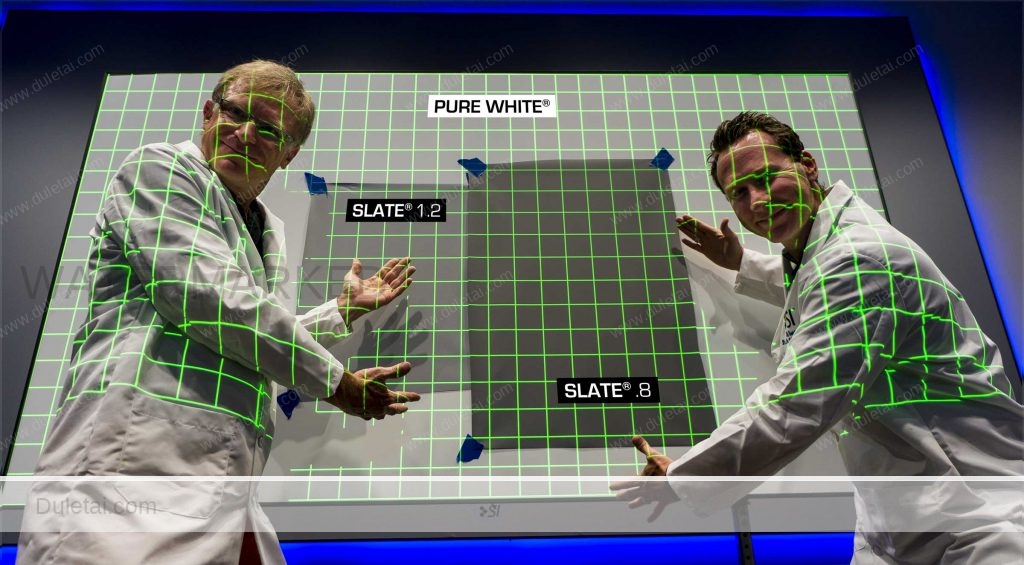
This picture shows you a 120″ Diagonal, Screen Solutions Intrigue Holographic Rear Projection Screen in an Under Armour Retail Store – Pennsylvania. They use this particular holographic projection screen for in-store digital signage and media presentation.
Great for 3D object floating on a Intrigue transparent holographic projection screen.
3D graphics floating on a Intrigue transparent holographic projection screen.
3D wireframe graphics on a Intrigue Rear Projection Screen
Views: 586
Diffusion screen fabric; Standard Matt white, gain ~1
Diffusion screens spread the projected light evenly over a wide viewing area.
Is the ideal choice for any application which requires a wide viewing angle or when ambient light is controllable.
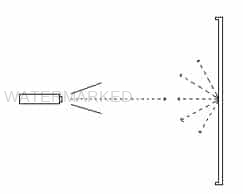
Reflective screen fabric; Datalux, Pearlescent. gain ~2
Gain is obtained using a special coating that reflects light over a small viewing area.
Light rays projected on the screen are reflected like a mirror, so that light arriving at a certian angle from
the top will be reflected at an equal and opposite angle to the bottom.
Ideal for situations where ambient light cannot be controlled.
Because of the relective properies, this screen fabric is well suited when projectors are ceiling mounted.
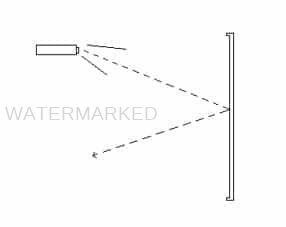
Retro-reflective screen fabric; High power. gain ~2.8
Retro-reflective screen fabrics have a surface which is impregnated with tiny glass beads producing
a reflected image of unequaled brightness.
With retro-reflective screen fabrics most of the light is reflected back to the source.
Ideal for situations when theres a high amount of un-controllable ambient light.
Best results are achieved when the projector is positioned on the same level as the audience, because
most of the light is reflected back along the same path.
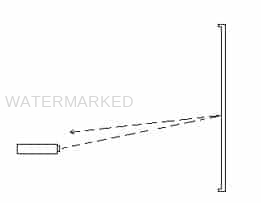
Reversa Screens ; Rear projection. gain 5.8
Solid rear projection screens that obtain record breaking gain values
Designed to be used anywhere including in bright sunny
conditions.
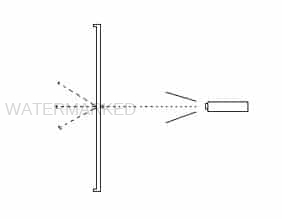
LUX:
Reflected light is measured in lux.
Research has shown that approx. 400 lux is an adequate luminance value for showing images under normal light conditions.
Lux is calculated as follows:

——————————————-
Projected image area
(square m)
Example:
Using a 1500 ANSI lumen projector with the Projecta Pro wall screen 1800, matt white finish (gain 1).

——————————————-
3.24 m
(1.8m x 1.8m (HxW))
Please allow for a higher lux value if you have higher than normal ambient light (ie. direct sunlight).
Because of the uniqueness of different situations, the above advice should only be used
as basic guidelines, not as essential criteria.

